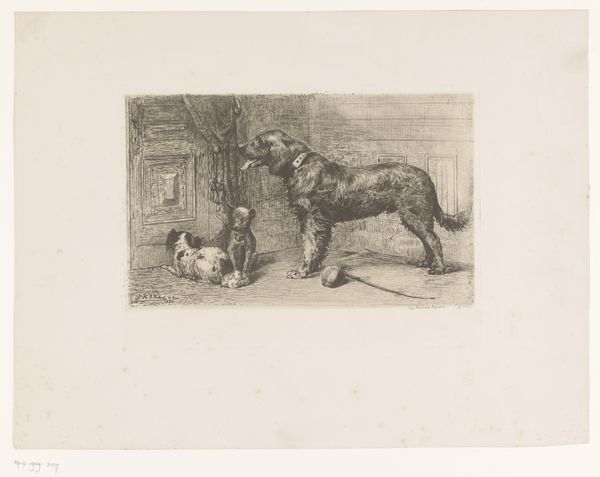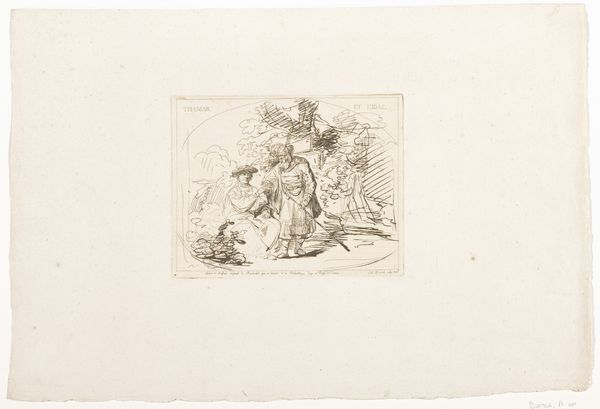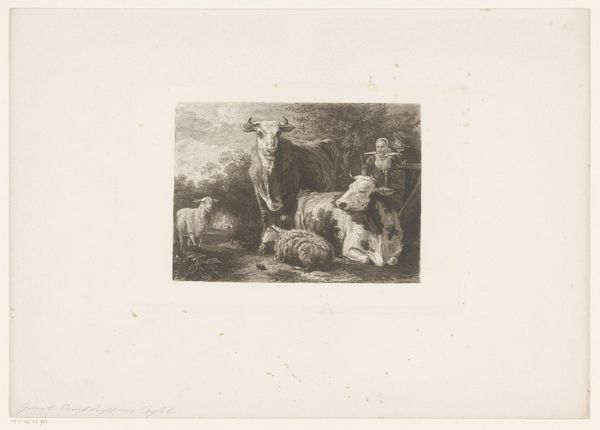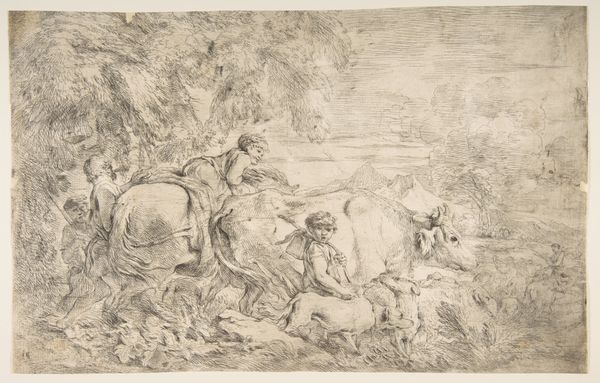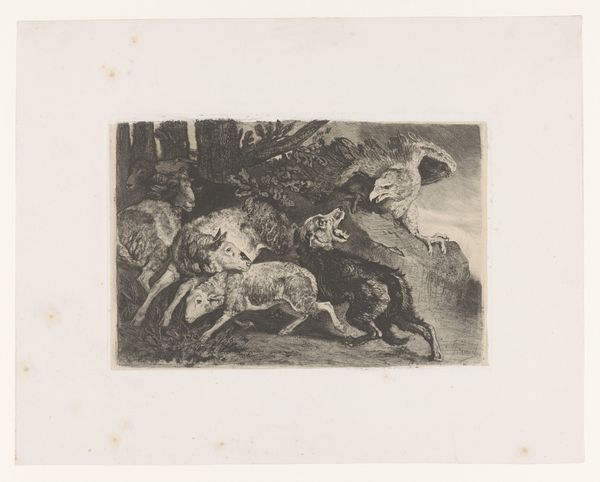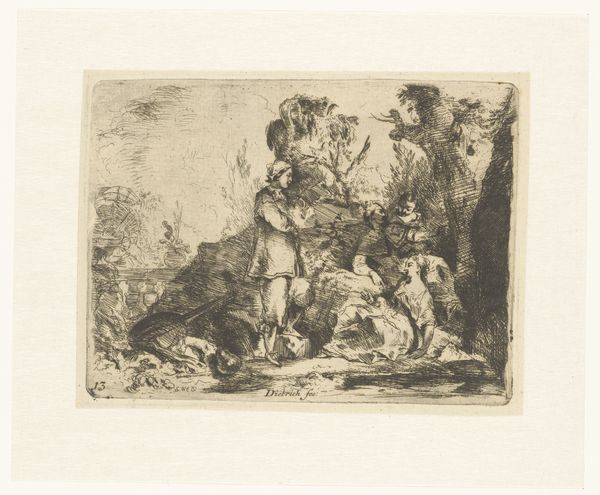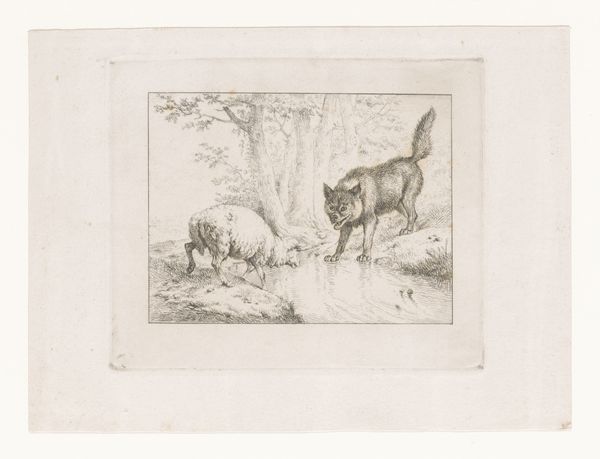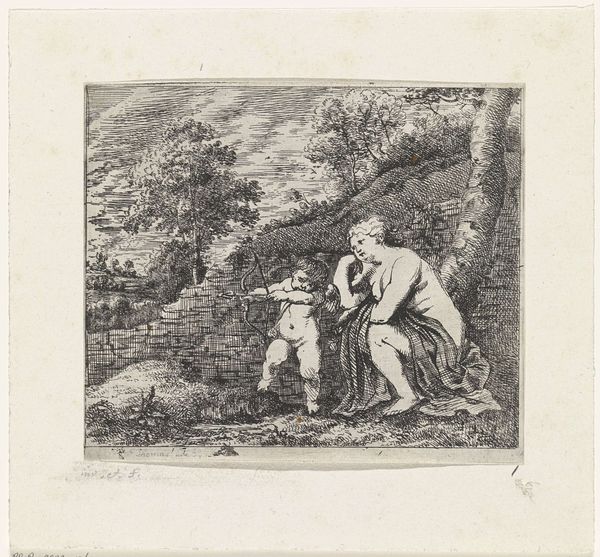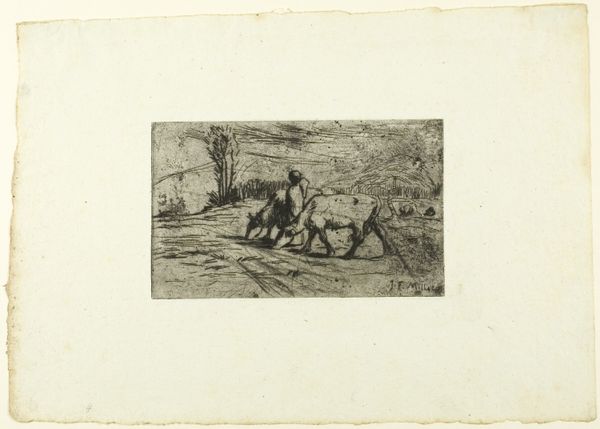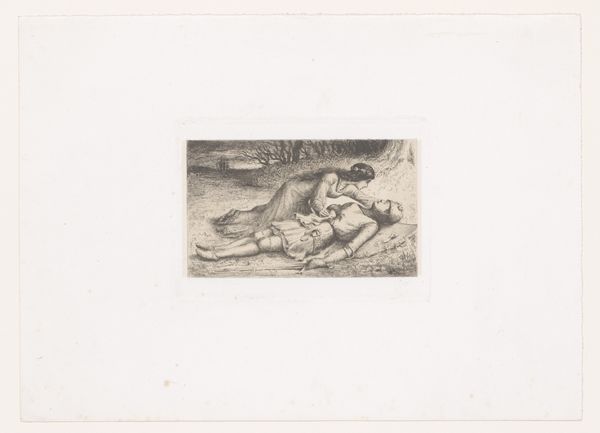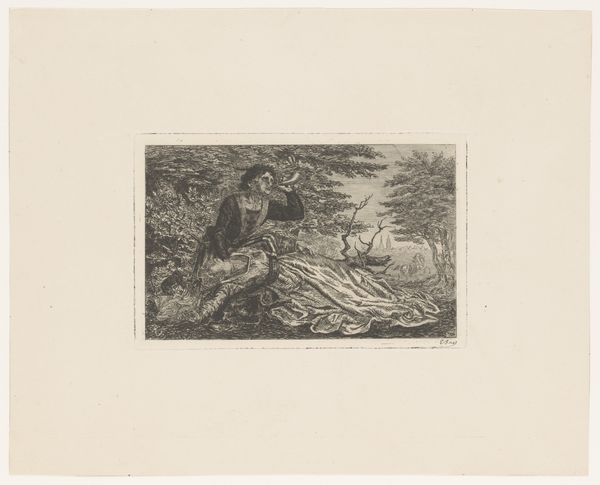
Dimensions: sheet: 6 1/8 x 9 1/16 in. (15.5 x 23 cm) image: 3 3/16 x 5 1/8 in. (8.1 x 13 cm)
Copyright: Public Domain
Curator: This etching, titled "La Fuite de Clelie," or "The Flight of Clelia," was completed by Jean-Honoré Fragonard between 1763 and 1764, and it now resides at the Metropolitan Museum of Art. Editor: It evokes a clandestine rendezvous, or perhaps a hasty departure. There’s an immediate sense of drama rendered in the hurried linework; it captures that urgent feeling. Curator: Yes, the use of ink to create light and shadow adds to the dynamism. Look at how Fragonard uses varied line weights to build up depth and volume within the composition. Observe how he suggests rather than defines form, leaving much to the viewer's imagination. Editor: Fragonard worked during a transitional period when entrenched social structures faced challenges amid burgeoning revolutionary ideas. That tension appears right here! Clelia's escape speaks to anxieties around gender and freedom at the time. Perhaps we should see Clelia’s narrative as a precursor to discussions about autonomy and agency of the individual? Curator: I would argue that any potential meaning regarding 'agency' or 'autonomy' is ancillary, born not from intent, but incidentally because of its structural relationships and artistic construction. Consider the density of the ink work, its deliberate contrast between the stark whiteness of the fleeing Clelia and the depth of surrounding environment – it functions primarily as a vehicle for formal, aesthetic concerns. Editor: It is simplistic to only think of these details on such a limited scale; formal components do so much more work when read through cultural context. Clelia’s hasty exit invites conversations about subversion and change. The themes and aesthetic strategy cannot be disconnected in any reading that attempts historical rigor! Curator: Hmm… It’s certainly food for thought, especially as Fragonard expertly juxtaposes lightness and dark— a visual echo chamber of narrative complexity, perhaps. Editor: Exactly. It challenges our traditional way of thinking about it. It invites more contemporary discussion, after all.
Comments
No comments
Be the first to comment and join the conversation on the ultimate creative platform.
